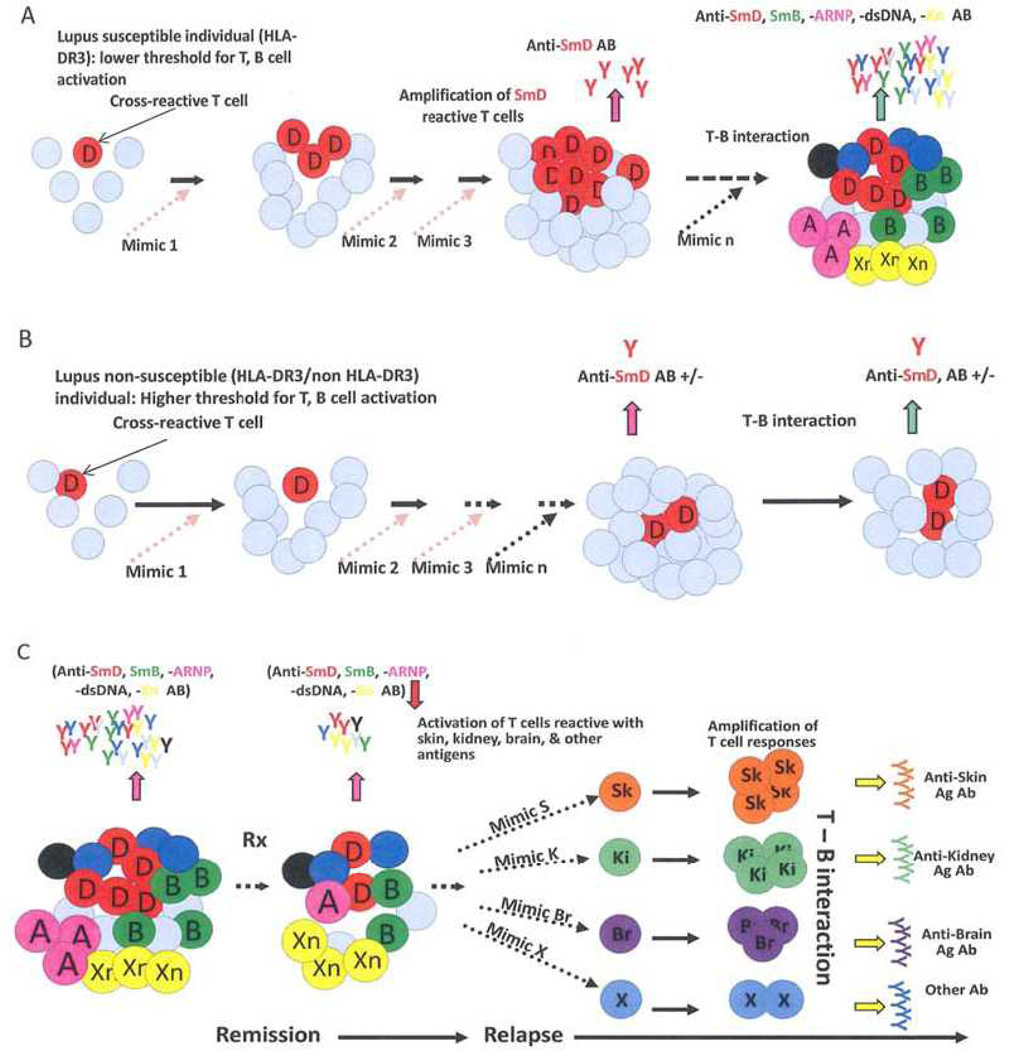Figure 2.
Generation of autoreactive Abs and effector T cells in SLE by environmental T cell epitope mimics. Accumulation of cross-reactive T cells is a consequence of responses to environmental mimics in hosts withsusceptibility genes as depicted in A but not in hosts without these genes as depicted in B. In C, the accumulation of diverse autoreactive Abs and T cells as a response to these mimic results in varied SLE clinical presentation. After therapy, the complexity of these autoantibodies and autoreactive T cells are reduced, leading to remission. Over a period of time after discontinuing therapy, the complexity of autoantibodies and effector T cells returns, leading to a protean clinical presentation in relapses. The mimics reside on a diverse array of environmental antigens and the chances for exposure to these mimics are random, providing a scenario in that SLE is not caused by a single pathogen. This mechanism has the flavor of a stochastic process (Fu et al., 2011).

